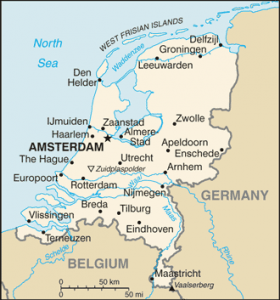The Dutch Ministry of Economic Affairs (computer translated) is reporting today a second bird flu outbreak at a Netherlands farm.

The latest outbreak has been detected Ter Aar (Zuid-Holland) in the southern Netherlands. It has affected three barns containing 43,000 chickens, according to ministry officials.
The strain has been determined of the H5 variety; however, it is not clear if it is the same H5N8 avian influenza that has hit farms elsewhere in the Netherlands, Germany and England. The final laboratory finding should be available tomorrow.
A nationwide ban on the transport of all poultry and products has been instituted and will last up to 72 hours.
The latest outbreak in the Netherlands follows one earlier this week at a farm in Hekendorp, in which some 150,000 laying hens were culled. That outbreak has already been confirmed as being caused by H5N8 avian influenza.
Earlier, the World Organization for Animal Health (OIE) said the following in a press statement:
Based on the partial sequence data of the HA gene segment, the German, the Dutch and the British viruses were identified as closely related to the Republic of Korea H5N8 viruses. Investigations are continuing to determine the source. The viruses belong to the clade 2.3.4.6.
Wild birds can normally carry avian influenza viruses in their respiratory or intestinal tracts but they do not commonly get sick. They have historically been known as reservoirs and vectors of AI viruses. Around the world, surveillance measures have been put in place to monitor occurrence and characteristics of AI viruses in wild birds.
To date, the infection with avian influenza viruses subtype H5N8 has been detected in wild birds in China, the Republic of Korea and Japan. The majority of avian influenza viruses does not cause disease in wild birds, but is very likely that wild birds might spread the virus via their migratory flyways.
For more infectious disease news and information, visit and “like” the Infectious Disease News Facebook page

